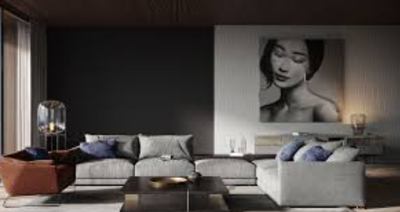
A 3D product animation video can do something that no photo ever could — make furniture feel alive. It doesn’t just show an armchair or table; it lets people see how it behaves. The texture reacts to light, drawers open smoothly, the fabric shifts under invisible weight. That little bit of motion changes how buyers connect with the product. It turns marketing from display into experience.
The Need for Motion in Furniture Marketing
Furniture is tactile by nature. People want to imagine how it moves, feels, and fits in their daily lives. Static photos, no matter how polished, can’t show function. They freeze the object in one perfect moment. But furniture isn’t static — it folds, slides, bends, and supports. When those motions are missing, the product feels distant.
A 3D animation fills that gap. It shows the product in use, as if the viewer were standing in the room. Even small gestures, like the way a lamp shade rotates or a cushion bounces back, make the design believable. Motion turns an object into a story about comfort and precision.
From 3D Model to Marketing Asset
Creating a 3D animation is part engineering, part storytelling. The process begins with a model that matches the real object to the millimeter. Designers add realistic textures, fabrics, and lighting. Then comes rigging — the technical setup that lets the piece move naturally.
Once motion is defined, the animator chooses the tempo. A slow rotation may emphasize craftsmanship, while a brisk transformation fits modern, modular furniture. Every frame is calculated, then rendered to form a smooth, detailed video that looks like a live shoot.
The result is more than a visual — it’s a reusable marketing tool. A single animated clip can work on websites, ads, product pages, trade-show screens, and social platforms.
Why It Works Better Than Photography
1. It shows function, not just form.
Viewers see exactly how drawers glide or how a bed extends. This kind of clarity builds trust — there’s nothing to guess.
2. It builds emotion.
Motion, sound, and rhythm make people feel what the product stands for. Slow pans convey luxury; quick transitions suggest innovation.
3. It saves production time.
There’s no need for shipping samples, staging photo sets, or hiring crews. Everything happens digitally, so updates are simple and fast.
4. It strengthens brand image.
Consistent animation quality and lighting give a recognizable look to every launch. Viewers begin to associate the brand with precision and innovation.
How Brands Use 3D Animation in Campaigns
Product launch videos: Short animated teasers show new collections before physical pieces exist.
Social media clips: Eye-catching motions attract attention on Instagram, TikTok, or Pinterest.
E-commerce previews: Customers can rotate furniture or watch short motion sequences right on product pages.
Trade show visuals: Large screens loop animations to highlight design features and materials.
Digital showrooms: Animations replace bulky catalogs with elegant, interactive presentations.
Every use case shares one outcome — movement keeps viewers watching longer. More time on screen means stronger recall and better conversion.
Marketing Impact in Real Numbers
Furniture brands using animation often see measurable changes. Engagement on product pages increases because viewers explore motion instead of scrolling past it. Video-based ads deliver higher click-through rates than static ones. Even return rates drop, because customers know exactly what to expect.
Internally, companies save resources too. One 3D asset can be re-rendered in new colors or materials for future campaigns. This flexibility gives marketers visual freedom without production stress.
Why It Feels Human
Animation might sound technical, but its success depends on emotional intelligence. A good 3D product animation video doesn’t overwhelm with detail — it guides the eye. The camera moves as if someone were handling the piece with care. Reflections, shadows, and timing all work together to make the product feel approachable.
When done right, viewers forget they’re watching something digital. They just see design presented honestly — the way it’s meant to be seen.
The Future of Furniture Storytelling
Furniture marketing used to rely on imagination. Now, with 3D animation, imagination becomes visible. Every product can show its purpose and presence before it’s built. For designers, it’s a way to express craftsmanship. For brands, it’s a language of trust. For shoppers, it’s a glimpse of how their home could look.
A 3D product animation video is not just a tool — it’s the bridge between concept and connection. It turns the simple act of viewing into a sensory experience, where design speaks for itself and motion makes the message real.



(0) comments
We welcome your comments
Log In
Post a comment as Guest
Keep it Clean. Please avoid obscene, vulgar, lewd, racist or sexually-oriented language.
PLEASE TURN OFF YOUR CAPS LOCK.
Don't Threaten. Threats of harming another person will not be tolerated.
Be Truthful. Don't knowingly lie about anyone or anything.
Be Nice. No racism, sexism or any sort of -ism that is degrading to another person.
Be Proactive. Use the 'Report' link on each comment to let us know of abusive posts.
Share with Us. We'd love to hear eyewitness accounts, the history behind an article.